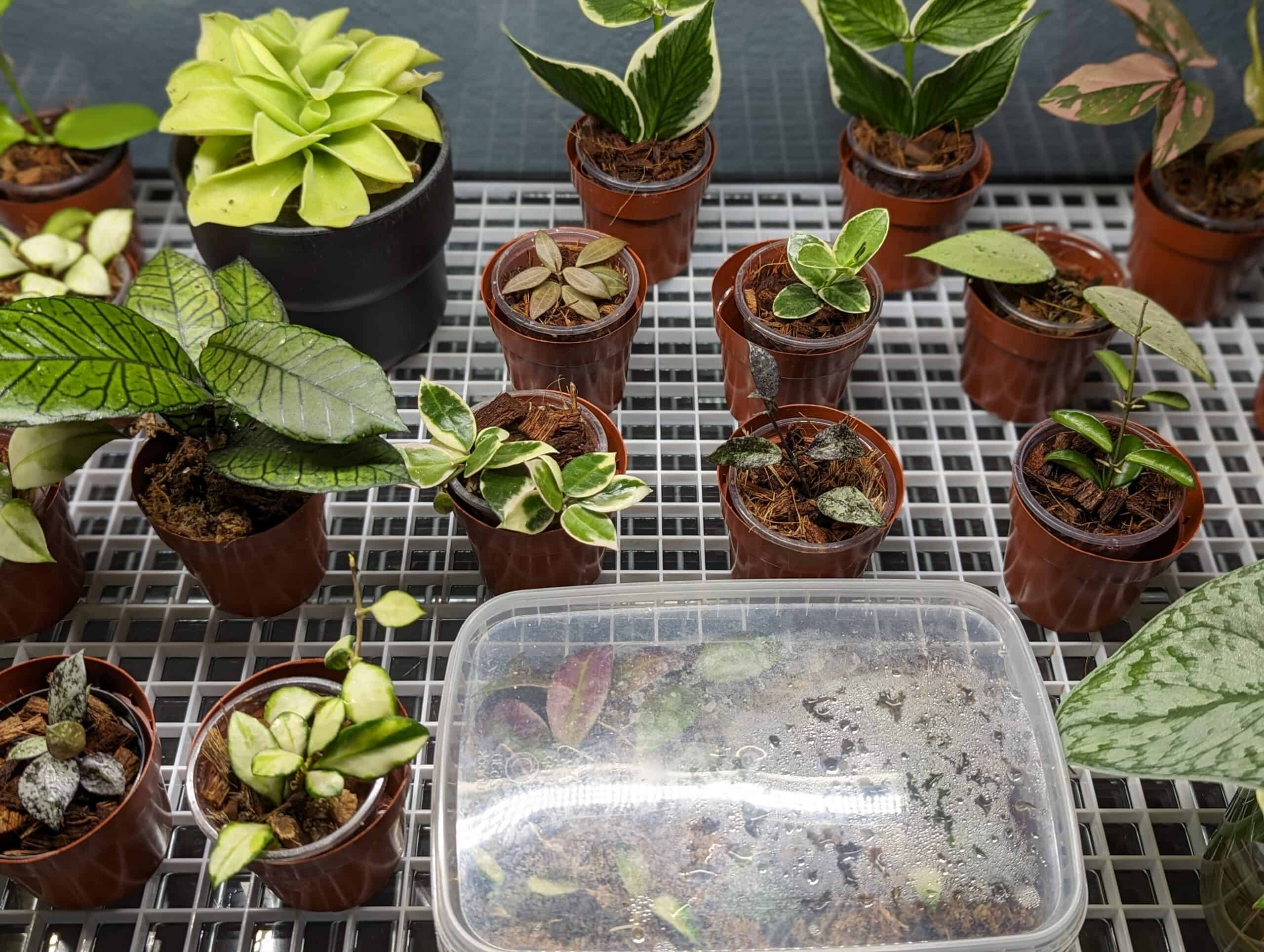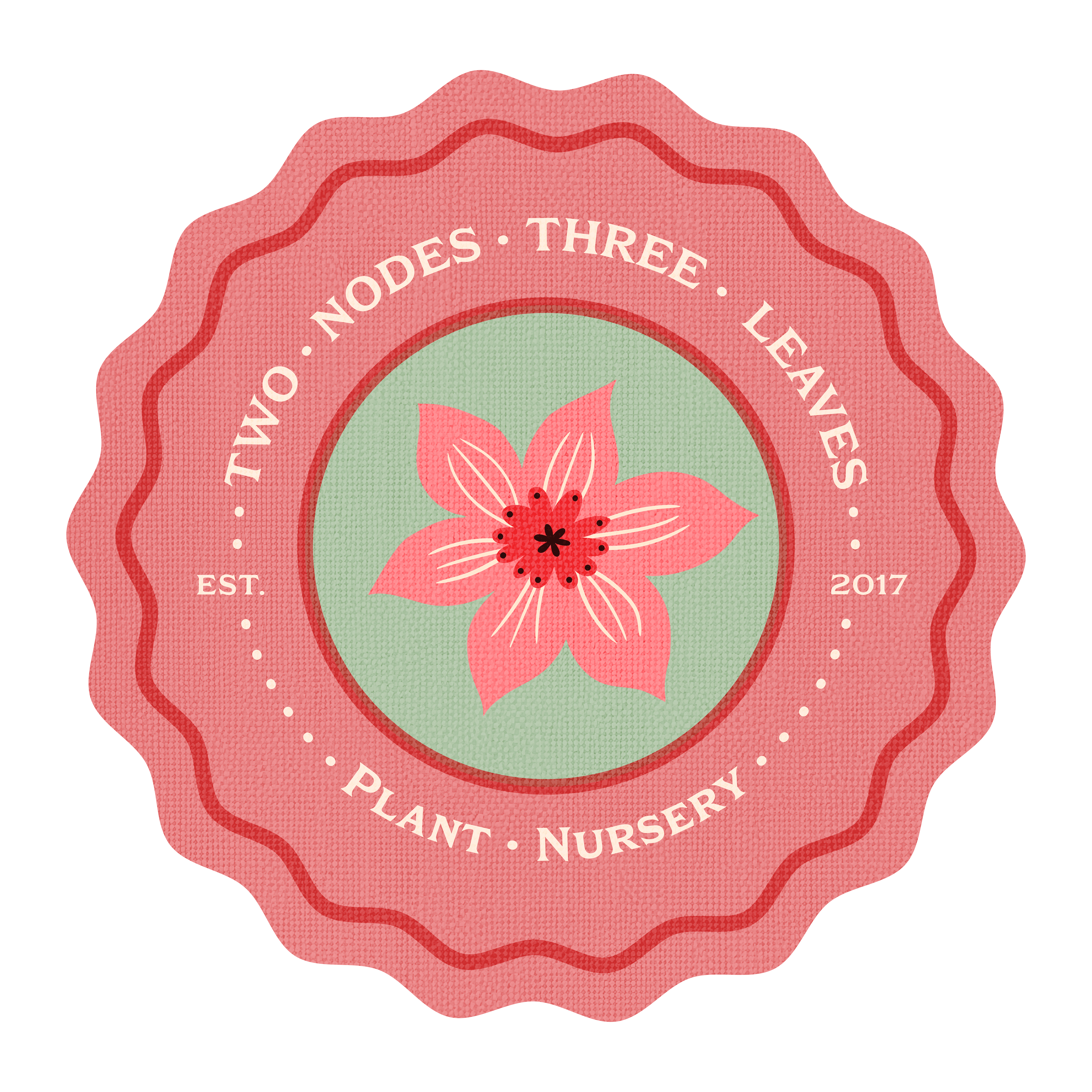My favorite part in the process of growing houseplants is Hoya propagation. But hang on, the first thing I must tackle is planning the space. I know it might not be the thrilling part, but it’s as essential as making that crucial cut. I won’t pretend I’ve always excelled in this aspect—sometimes, my plant-passionate side rushes ahead. So, I will start this plant propagation journey with square one: space preparation.
We, plant people, live by one universal rule: There’s always room for one more plant. Be it a small nook, a sunny corner, or the last sliver of shelf space, we can make it work. However, it’s better to plan ahead when preparing to accommodate not one, not ten, but upwards of hundreds of new pots.
Think of it this way: your space isn’t just about squeezing in as many pots as possible. It’s about creating a nurturing environment where your cuttings can put down roots and flourish. A cozy, well-lit, easy-to-reach spot is a luxury resort for your plant babies. Neglect them in some far corner, though, and you may as well say sayonara to your propagation dreams.
So, before the scissors meet a Hoya stem, survey your home. Identify a warm spot without being hot, bright but not blinding, and secure so you don’t accidentally knock anything over. Once you’ve found the perfect place, ready it—clean it up, organize supplies.
My prop places are either lower shelves in IKEA cabinets, a transparent plastic box under a grow light or near the windows, or a terrarium that I emptied and cleaned after the previous batch. More mature plants are placed around the house in less humid environments to develop and acclimate.

Humidity is the number one necessity for the Hoya cuttings to develop. These tropical natives enjoy a high-humidity environment, which helps prevent them from drying out before their roots fully establish. However, this doesn’t mean we must turn our home into a tropical rainforest—aim for at least 60% relative humidity. This humidity level will keep your cuttings moist without overdoing it.
Let’s shed some light on the second element—well, not too much light. Though Hoyas love bright and, in some cases: direct sunlight, young cuttings are more sensitive. Exposure to harsh light for too long can stress them out, leading to drying out or burning. So, it’s a balancing act: provide enough light for photosynthesis but avoid turning your cuttings into plant crisps.

Regarding warmth, the rule of thumb is simple: maintain a steady temperature. Less fluctuation can help root development. Here’s what most hoya growers agree on the optimal temperature range for Hoya cuttings to root efficiently is between 70°F to 75°F (21°C to 24°C). That’s warm enough to encourage root growth without overheating the leaves.
Speaking of warmth, let’s debunk a common myth about heat mats. While these tools are excellent for helping seeds germinate, they aren’t the best fit for young Hoya roots. Excessive heat can dry out the roots.
Moreover, I firmly believe that placing heat mats under hoyas is as ridiculous as cleaning the roots with a toothbrush.
Last, if Humidity is Queen, airflow is King (trust me, I know how it sounds). A well-ventilated area prevents moisture buildup, discourages mold growth, and keeps root rot at bay. So, don’t be shy about opening a window or setting up a fan to keep the air moving. In my environment, I open the lid on the terrarium or prop box during the day. Before closing, I spray with fertilizer or just water and close everything. If pots have dry soil, I water plants in the morning to give them time to dry before nighttime. My terrariums have fans on 24/7.
Taking care of these elements will set your Hoya cuttings on a path to success. Remember, propagation is as much about patience and attention (I think attention to the plant state has more weight than patience) as it is about knowledge and skills. Keep the environment right, and you’ll be on your way to growing a thriving Hoya family that will multiply quickly (a good problem to have).
(Disclaimer: The advice shared here is based on my personal experiences. It should not replace professional advice. Always consider your plant’s specific needs and your environment.)
